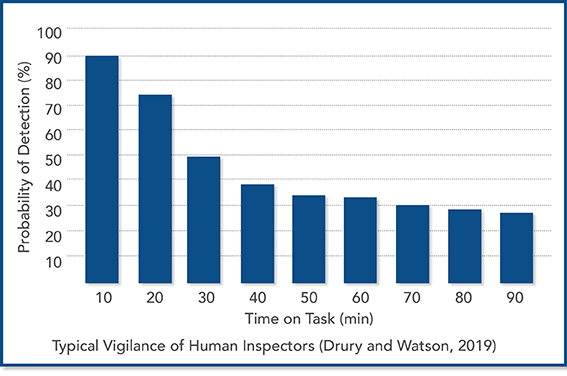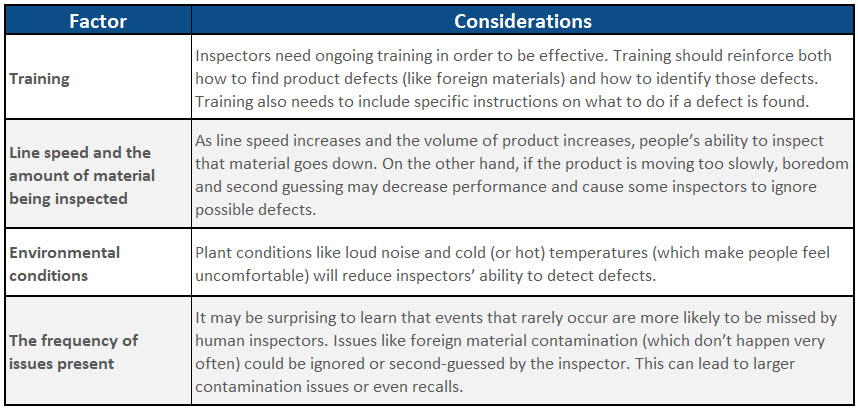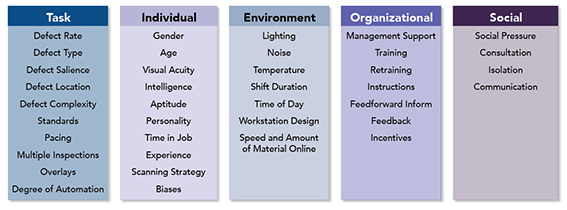“This morning, our inspectors found a tiny speck of hair on a piece of chicken. But last week, they missed a shovel.”
Does this sound familiar to you? Many of our clients tell us that food inspectors can be remarkably good at finding foreign materials … sometimes. But they also know that many different factors affect the performance of the people tasked with inspecting our products.
PPO was interested in learning more about what factors can affect the performance of inspectors. So we turned to the best source of information: previous research on this topic. We were surprised to discover that there is very little research available, especially when it comes to the food industry! Most published research is focused in areas such as vigilance (for example, military threats in submarine warfare) and inspection of mechanical defects (in industries such as aerospace, avionics and printed circuit board design). But these studies can still give us a good insight into what’s likely to happen in a food processing plant.
What is the typical vigilance of food inspectors?
We all know that humans aren’t perfect. The research we reviewed shows that people generally perform best in the first 15 minutes of an inspection task. This graph shows what happens to their ability to find something correctly, in the first 90 minutes of an inspection task.

As we can see, the amount of time spent on the task significantly increases the possibility of missing a contaminant (or a shovel!). But time on task isn’t the only thing we need to consider.
Below are a few examples of other factors we need to think about when talking about performance on inspection tasks:

And there are even more internal, external, social and physical factors that will impact the performance of each inspector:

It’s important to remember that all of these research projects were set in experimental conditions. That means the inspectors knew they were being measured, which affected their behaviour. It’s impossible to perfectly measure the performance of an inspector in non-experimental conditions (more on that in a future blog post).
All of this explains why it’s so important to find ways to automate inspection tasks in a food plant. Automation makes inspection more accurate and more consistent, and can significantly reduce your risks of recall.
Ready to improve inspection outcomes and maximize profitability in your plant? Get in touch with the PPO team today.
Selected References:
Drury, G. Colin, and Jean Watson. 2019. “‘GOOD PRACTICES IN VISUAL INSPECTION.’”
